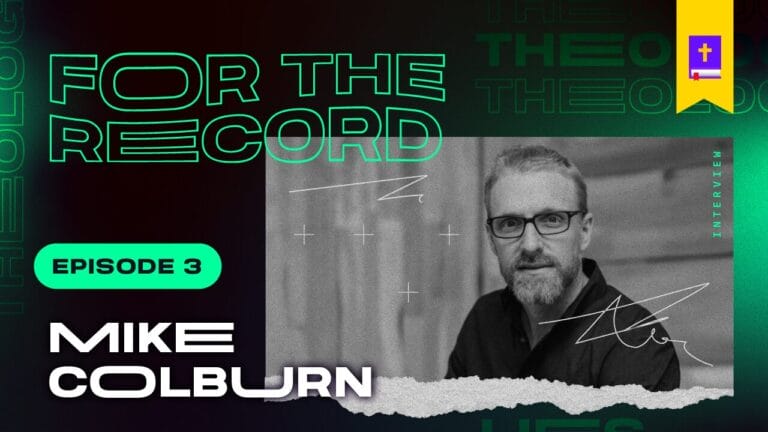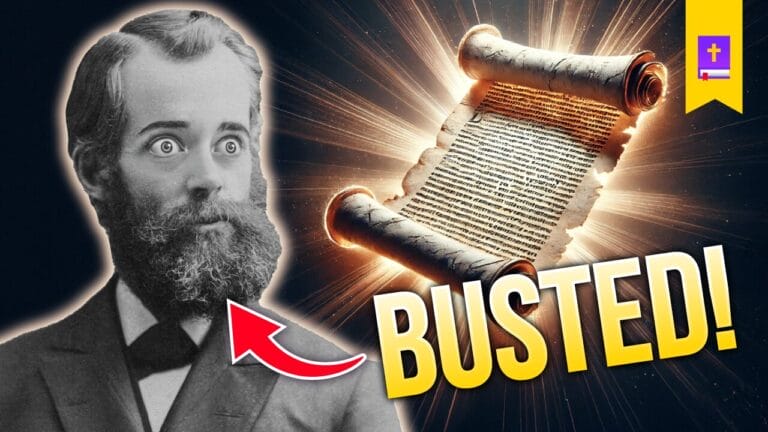A fundamental aspect to the SDA system of theology is the claim that there is a literal tabernacle building in heaven that the one on earth was an identical, scale model copy of. The appeal being to Hebrews 8:1-5. Paired with this claim is another central belief that, at His ascension, Jesus only entered into the Holy Place of this tabernacle building, not the Most Holy. On October 22, 1844, Jesus moved from the Holy Place of this building into the Most Holy to begin what they call the Investigative Judgment—the “second phase” of the atonement.
As can be seen in Salvation: Contours of Adventist Soteriology, a scholastic work by SDA scholarship, SDA theologian Jon Paulien explains what the SDA Church means by the word “atonement.”
One of the most debated topics of Christian theology is expressed in these questions: Why the cross? What really happened at the cross? The answers to these questions have been widely debated under the general heading of the atonement. But when Seventh-Day Adventists (SDA) approach the matter of atonement, an immediate dilemma is perceived. When Adventists talk about atonement, they refer specifically to what Jesus is doing now in the heavenly sanctuary. On the other hand, when scholars outside the Seventh-Day Adventist Church discuss the atonement, they refer specifically to the cross of Jesus Christ and what God was doing there.
Jon Paulien, Salvation: Contours of Adventist Soteriology, Chapter 10 , pg. 189
The concept of Jesus only entering behind “the first veil” at His ascension is essential for this entire theory to work, which is why so much is staked on it and Adventists defend it so vehemently. If it’s demonstrated that this is incorrect, the entire framework of Seventh-Day Adventist theology collapses.
There are a number of reasons why this theory is incorrect according to scripture:
1. Scripture makes it clear that, at His ascension, Jesus entered into the presence of God
The SDA Church tells us that what was on earth was an identical copy of what is in heaven, only it was a scaled down model. To be consistent, they would need to then demonstrate where the presence of God was ever manifest in the holy place of the earthly sanctuary since scripture is clear that Jesus entered into the presence of God at His ascension (Hebrews 9:24, 10:19-22).
The presence of God was never manifest in the Holy Place, but only the Most Holy. And the author of Hebrews makes it clear that the antitypical Most Holy Place is heaven itself, not a compartment in a building in heaven (Hebrews 9:24). It’s because of Jesus doing this once for all time that believers have access to God with boldness and confidence (Hebrews 10:19-22) unlike when the Levitical priesthood work was going on and only the high priest, once a year, had access to God’s presence (Hebrews 9:6-8).
SDA scholarship and the Sabbath School Quarterly are notorious for trying to argue the Greek phrase ta hagia—the holy place, or places—that the book of Hebrews uses only refers to the sanctuary generally speaking, but does not specify the Most Holy Place. This is again bad argumentation as the author very plainly states that Jesus entered into the presence of God—which is the Most Holy Place, Heaven itself (Hebrews 9:24). This was only ever manifest in the Most Holy Place.
This argument also raises inconsistency with regards to their argument in favor of there being a heavenly tabernacle identical to what was on earth because the presence of God never manifest in the Holy Place. Ellen White claimed to be shown in vision from God that Jesus and the Father stood up together and moved from the Holy Place to the Most Holy in 1844. Which would mean what is in heaven, even if one grants a literal building, is not identical to what was on earth.
She also says she saw them on a throne in the Holy Place and they moved to another throne in the Most Holy. There was no throne in the earthly sanctuary at all, let alone two. The Levites were not kings and did not sit down because the work of dealing with sin was always going on. Only the Ark of the Covenant was in the Most Holy which had the mercy seat that the priest sprinkled with blood where God’s manifest presence was found.
So the appeal to what was on earth to support this theory actually backfires due to inconsistent argumentation.
2. Christ entered “behind the veil” that only the high priest could enter—directly into God’s presence
Hebrews 6:19-20 further demonstrates that Jesus entered directly into the presence of God because the author tells us that the “veil” that Christ entered was the one only the high priests could. It was “after the order of Melchezidek” that He entered “behind the curtain.” Melchezidek was a high priest king (Hebrews 7:1). When the author plainly states that Jesus entered into the presence of God, it’s clear that these verses are in reference to Christ entering the Most Holy Place—God’s presence. This did not happen in 1844, but at His ascension.
The SDA Church claims that the “curtain” in reference in Hebrews 6 is referring to the “first veil” that separated the Holy Place and the outer courtyard. This is also what Ellen G. White affirmed which, for the SDA Church, functions as a divine interpretation of the text coming directly from God.
They appeal to Hebrews 9:3 and read that back into chapter 6. Not only is this in violation of basic hermeneutic principles, but makes no sense regarding the context of both chapters.
In chapter 6, the author is laying out the foundation that what God promised Abraham was not forgotten but upheld and affirmed in the person and work of Jesus (Hebrews 6:13-5). And this is to remind the believer of the hope that they have in Christ being a sure foundation and that God fulfills His promises (Hebrews 6:17-8). He then says that, because of this, our hope should function like an anchor for the soul and then he gives a clarifier and descriptor of this hope—”a hope that enters into the inner place behind the curtain, where Jesus has gone as a forerunner on our behalf, having become a high priest forever after the order of Melchizedek” (Hebrews 6:19-20).
Our hope is rooted in Jesus Christ, the ultimate fulfillment of God’s promises. The believers hope is rooted in the fact that Jesus entered into the presence of God (“behind the curtain”) on our behalf and He forever lives to intercede for us. He will not fail at this, so just like with Abraham, remember that God keeps His promises and He will not fail. This is very clearly referring to the curtain that only the high priest could enter as the author says Jesus entered “after the order of Melchezidek”—which is what he then transitions to expounding upon in chapter 7 where he explains why Jesus’s Melchizidekian priesthood is superior to that of the Levites.
In chapter 9 (Hebrews 9:1-10), the author is simply giving the earthly layout of the tabernacle which is why verse 3 mentions the second veil. This does not prove that the term “behind the curtain” in chapter 6 is referring to the “first veil.” This is being read backward into chapter 6 when chapter 6 itself informs us what the author is referring to.
In Ministry Magazine, an official organ of the SDA Church, Adventist theologian George E. Rice, admitted to this faulty hermeneutic of reading the text backwards, but states that “Hebrews 6 makes no attempt to identify to which veil it refers.”
Hebrews 6:13-20 deals with dispensing the blessings of the Abrahamic covenant to Abraham and his children. It notes: (1) that God swore by Himself to fulfill His promise (verses 13-16); (2) that He interposed with an oath to convince the heirs of the covenant that He would fulfill His word (verse 16); (3) that by these two unchangeable things we have “strong encouragement to seize the hope [fulfillment of God’s covenant promises] set before us” (verse 18, RSV); and (4) that hope enters within the veil where Jesus has gone on our behalf as priest after the order of Melchizedek (verses 19, 20).
This context does not deal with the sanctuary per se—in other words, with its apartments, furniture, services, etc. It introduces the veil simply to indicate where Jesus is ministering, where the hope of the covenant people is centered, and from whence the covenant blessings are dispensed. So it would seem that the word veil is used metaphorically to point to the sanctuary as a whole, and that, unlike Hebrews 9:3, Hebrews 6 makes no attempt to identify to which veil it refers.
Ministry Magazine, June 1987, George E. Rice, “Within which veil?”
As we saw—this is not true. It was the veil that only the high priest could enter directly into the presence of God. This claim would stand if the book ended there, but it doesn’t. Not only are we told is was as a high priest that Jesus entered, but again, that he entered “into the presence of God” which was only ever in the Most Holy Place. As we progress through the book we are given a fuller explanation of Jesus’s priestly work, what it looks like, etc. All of which is consistent with this understanding that the author continues to build upon.
3. Jesus was not doing an analogous work to the Levites in the Holy Place until 1844
Because of the necessity of 1844 theology, the SDA Church is forced to claiming that from the ascension until 1844, Jesus was doing an analogous work to the Levites, only in the heavenly sanctuary building, not on earth.
This again breaks down on grounds of inconsistency as well as the biblical witness. The daily ministration of the priests did not involve entering into God’s presence. That was reserved to one day a year and only the high priest could enter (Hebrews 9:6-8). Furthermore, the author of Hebrews goes on to explain that while the Levitical priesthood work was going on, the way into the presence of God was closed off. But through the blood of Christ, a new and living way has been opened for all believers (Hebrews 10:19-22).
Now that this has happened, the daily ministration type work of dealing with sin is no longer happening. And that entrance into the presence of God happened at the ascension, not 1844. Which means Jesus was not doing analogous work to the daily ministration of the Levites.
Part of what makes Jesus’s priesthood and sacrifice superior is the single, perfect, finality of it. Which is why the author goes to great lengths to stress that Jesus is “seated,” something the Levites never did in the sanctuary. But Jesus having put sin away at the cross (Hebrews 9:26) entered directly into the presence of God one time and sat down on His throne because, unlike the Levites, Jesus is simultaneously a high priest and a king in the order of Melchezidek (Hebrews 7:1).
It’s only the SDA Church that has to argue this subject because the life of their system depends upon it. But Hebrews was written well before 1844 and, when read comprehensively and in context, poses numerous problems for this theory—evidencing the weak foundation that Adventism is built upon.










